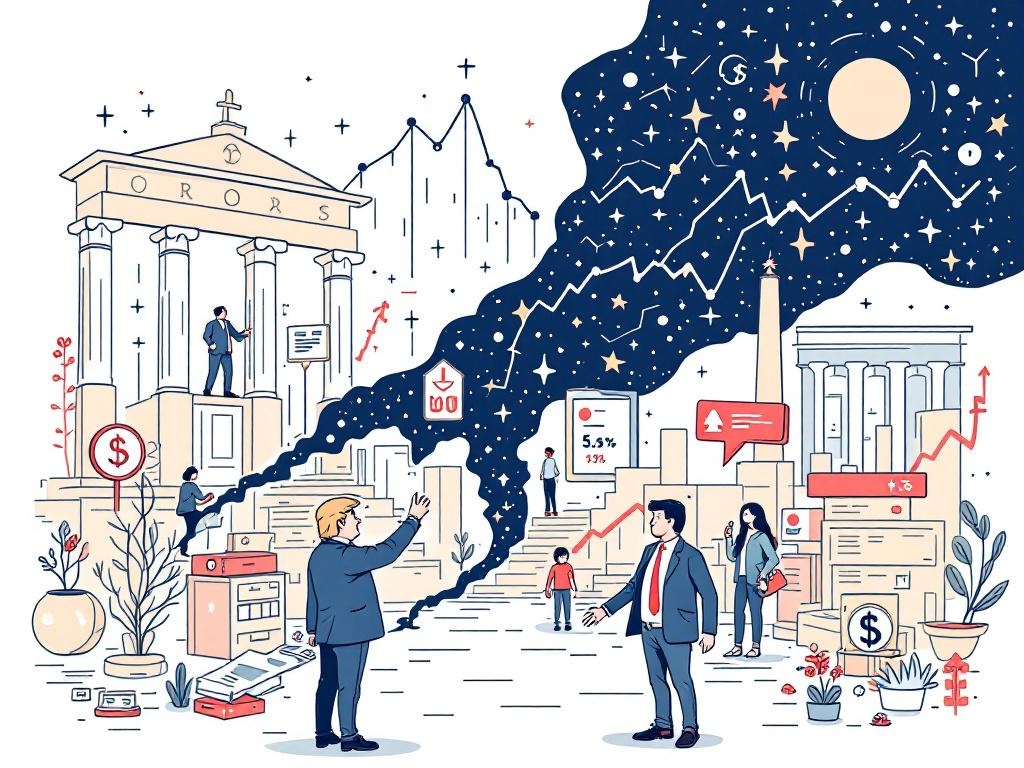Trump's Immigration Policies Threaten U.S. Economic Growth in 2025

Washington, D.C., Thursday, 3 July 2025.
The decline in immigration due to Trump’s crackdown is projected to slow economic growth and impact job markets. Deportations and ICE raids hit smaller cities, destabilizing communities and industries reliant on immigrants.
Economic Impact of Declining Immigration
The United States economy faces significant challenges due to a sharp reduction in immigration rates, primarily driven by the Trump administration’s stringent immigration policies. The annualized rate of net immigration has plummeted to 600,000, marking a considerable decline from the levels seen at the end of 2024, where the rate was about 900,000. This decline is largely attributed to reduced unauthorized immigration, with increased deportations and stricter border control [1]. Renowned economist Bernard Yaros from Oxford Economics forecasts that the long-term economic consequence includes a 0.25% decrease in the U.S. GDP, along with slightly elevated inflation rates due to this demographic shift [1].
Community and Labor Market Disruptions
Cities such as St. Louis, Buffalo, and Pittsburgh, which had previously experienced economic rejuvenation through immigrant communities, now face immediate impacts from deportations and ICE raids. These operations have led to empty restaurants, vanished fruit vendors, and reduced shopping activities, casting a shadow over local economies [1]. The crackdown has also severely hampered businesses in industries heavily reliant on immigrant labor, such as agriculture, where farms are struggling to harvest as workers fear deportations [1]. Furthermore, the detention and deportation measures are disrupting sectors like horse racing and construction, indicating a broader economic strain [1].
Federal Policies and Legislative Developments
The recent passage of a contentious immigration bill in the Senate further solidifies this enforcement trajectory by allocating an additional $175 billion towards immigration enforcement, signaling a probable continuation in the decline of net immigration [2]. Business and economic leaders are scrutinizing these developments closely, noting that while there is an anticipation of more job opportunities for native-born citizens, the reality of displaced businesses and labor shortages cannot be ignored [3]. Proponents of President Trump’s policies argue that reducing unauthorized immigration can lead to improved job prospects for American workers, though such forecasts remain contentious [1].
Looking Forward
As economic analysts continue to monitor the implications of these immigration policies, there is a consensus on the need for strategies that address the labor gaps emerging from the crackdown. With over 11 million individuals potentially losing Medicaid coverage and impending shifts in birthright citizenship laws, the policies championed under the current administration could have enduring ramifications on societal and economic structures [4]. Ongoing legislative negotiations are expected to shape the trajectory of U.S. immigration and border security policies, which will likely influence economic growth and community stability in the United States over the coming years [2].